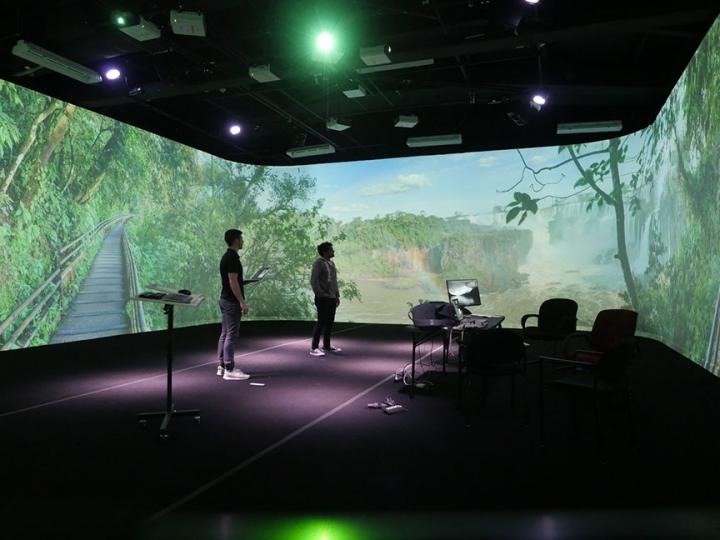Imagine being inside Rensselaer Polytechnic Institute’s Collaborative Research Augmented Immersive Virtual Environment Laboratory (CRAIVE Lab), which features a front-projection 360-degree panoramic display to immerse you visually, while 134 loudspeakers render a spatially superb sound.
Combined with networks of sensors and controllers, CRAIVE Lab provides its users new modes of interactions between humans and virtual worlds, with experiences ranging from the familiar to the otherwise remote or downright imaginary.

During the 178th Meeting of the Acoustical Society of America, held Dec. 2-6, at the Hotel del Coronado in San Diego, Jerry Huang and colleagues will present their work exploring whether the hardware for immersive virtual environments can be made easier to transport while still reproducing the audio and video impact across a wide range of contexts, such as in schools, offices or research institutes.
“We’re focusing primarily on developing construction and calibration methods for accelerated assembly, more flexible hardware configurations, and more effective calibration of the immersive experience,” he said.
[ad_336]
The researchers’ work combines a wave field synthesis system with an immersive video projection system. “Wave field synthesis is a spatial audio technique that uses a curated array of loudspeakers to reproduce a sound field,” Huang said. “The sound of individual loudspeakers combines precisely to re-create the listening experience.”
A front-projection design (for wide-viewing angles) allows an acoustically transparent screen to be used, and loudspeakers can be placed behind the screen for high-fidelity sound reproduction. Virtual sounds are “placed” into the real world and appear to be coming from their respective locations in space.
Both CRAIVE Lab and a deployable panoramic setup they created adopt this technique.
“Our deployable panoramic setup combines wave field synthesis with a modular design. Groupings of a dozen linearly arranged loudspeakers provide a scalable configuration for spaces of any size,” Huang said. “These arrays generate layered soundscapes relevant to the corresponding visual information, engaging the visual, auditory and tactile senses of people within the environment.”
[rand_post]
The researchers are also exploring “the scalability of hardware platforms for immersive environments,” he said. “We want to minimize the amount of labor, time and footprint usually demanded for the assembly of such infrastructures. And a scalable design also shows the potential for developing strategies of reproduction and rapid prototyping.”